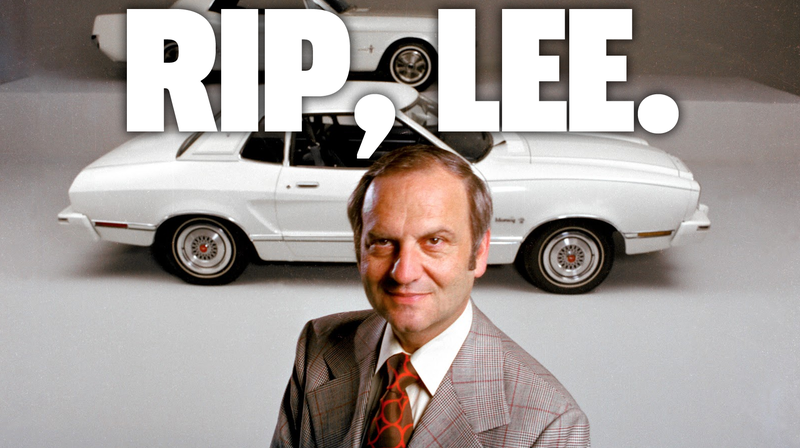
Lee Iacocca, one of the true legends of the auto industry died at 7:30 this morning at his home in the Bel Air neighborhood of Los Angeles, California. Iacocca was known for many things, but is probably best remembered as the man who was the driving force behind the Ford Mustang, and the CEO that managed to save Chrysler from near-certain destruction in the early 1980s.

Iacocca also was likely the only auto executive to have a best-selling autobiography, and was the driving force behind the modern rebirth of the minivan while at Chrysler. He had his share of controversy as well, getting fired from Ford as the result of the fallout from the Ford Pinto’s exploding fuel tank scandal, the risks of which Ford (and Iacocca) were aware of before the car went to market.
Lee Iacocca was born on October 15, 1924 to Italian-American immigrants in Allentown, Pennsylvania. He studied engineering, eventually getting a Master’s degree from Princeton, and got into the car business in 1946, with a job as an engineering trainee at Ford. Eventually, he’d become President of the Ford Motor Company.
Advertisement
Iacocca will be remembered as someone who had an almost preternatural understanding of what sort of cars people would want. He managed to establish entirely new segments of cars or resurrected dying ones.

Advertisement
His Mustang project at Ford defined the entire category of the “Pony car,” affordable muscle/performance cars people could drive every day; he understood the potential of the minivan when Ford passed on the project, taking it to Chrysler where it became a best-seller, and he even helped to save convertibles, introducing the Chrysler LeBaron convertible at a time when convertibles were dying out and famously without conducting any market research.
He had a hunch, played it, and it turned out to be right, like so many other times in his career.
Iacocca became something of a celebrity in the 1980s, showing up in Chrysler commercials with a determined, no-bullshit tone that resonated with people. It’s hard to imagine a modern CEO saying they’d been “kicked in the head” in a commercial, or telling consumers that “if you find a better car, buy it,” but Iacocca managed to pull it off with a certain rough charm.
Advertisement
Keep in mind that to get Chrysler back on its feet, Iacocca had to convince a very skeptical Congress to cough up cash for the first major automaker bailout. It was a huge gamble, but he pulled it off, and by 1983 he paid back the government loans, with, according to the Chrysler mavens at AllPar, a massive check written out for $813,487,500.

Advertisement
After saving Chrysler, the company eventually began to falter again, but while Iacocca was still in charge, he oversaw what is likely the reason that Chrysler (well, Fiat-Chrysler) is still around today: the acquisition of American Motors and another niche brand they owned called Jeep.

Advertisement
Iacocca retired from Chrysler in 1992, just before they really had a comeback, but they never would have been around to have any sort of comeback had it not been for Iacocca.
Outside of the automotive business, Iacocca was appointed by President Ronald Reagan to head the foundation to raise funds for the restoration of the Statue of Liberty, and founded the Olivio company, which makes olive oil-derived food products and donates all the profits to diabetes research, which he was inspired to do after the death of his with Mary from diabetes.
Advertisement
He was also on one episode of Miami Vice, where he played a park commissioner.
Lee Iacocca was one of the true giants of the modern automotive industry, and he will absolutely be remembered.













